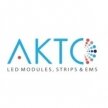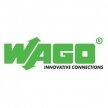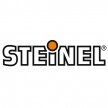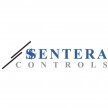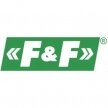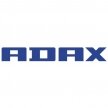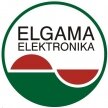-
Product Catalog
- Security and Surveillance Systems
- Automatic Circuit Breakers for Direct Current (DC) Circuits with Integrated Overload, Short-Circuit, and Voltage Stabilization Protection Functions
- Lighting with the help of electrical energy
- Automation and Control Systems
- Electrical distribution and installation
- Solar Energy Generation and Management Equipment
- HVAC control solutions for heating and ventilation.
- Special products and accessories
- Other products
- Safety tools
- Quality used products
Adapters-converters for relays and contactors
-
Relay adapters-converters are special devices used to connect various relay systems to contactors or magnetic starters. They allow smooth integration of different types of relay control circuits, which may come in various sizes, shapes, or configurations, into electrical control systems. Adapters are used for both the mechanical mounting of the relay and their electrical connection to contactors or starters.
-
Read more
Types:
Mechanical Adapters: This type of adapter ensures that different types of relays and contactors can be mounted in the same location or panel. They are used when a new relay or contactor needs to be installed, but its size or mounting hole differs from the older equipment.
Electrical Adapters: These adapters ensure that the relay is correctly connected to the electrical circuit, even if its contacts, voltage, or current requirements differ from those of the contactor or starter. They help protect against incorrect voltage levels and increase compatibility between the relay and contactor.
Transition Blocks: Used when there is a need to connect multiple different relay or contactor circuits. Transition blocks allow for connecting different types of relay contacts to contactors or magnetic starters, ensuring that the system operates seamlessly.
Construction:
Materials: Relay transition adapters are typically made from durable, heat-resistant, and electrically resistant materials such as polycarbonate, bakelite, or thermoplastics. These materials ensure safe and reliable mounting and insulation for relays and contactors.
Mechanical Structure: Mechanical structure adapters have fastening elements, such as screws or clamps, that allow for securely connecting the relay to the contactor or starter. They feature specially designed cavities and mounting holes that accommodate different relay and contactor sizes.
Electrical Connections: Electrical transition adapters have terminal blocks, wires, or plugs that facilitate easy connection of the relay to the contactor. These connections can be push-fit or screw-type, ensuring a reliable electrical connection between control and power circuits.
Modular Design: Many adapters have a modular design, allowing for easy modification or addition of relay or contactor components based on system requirements. Modular adapters are often mounted on DIN rails for easy integration into electrical control panels.
Practical Applications:
Industrial Automation Systems: Transition adapters are used in industrial automation systems where various combinations of relays and contactors need to be connected. For example, in factories equipped with automated production lines, adapters ensure smooth connectivity between control relays and contactors that control motors, pumps, or other devices.
Electrical Panels: Adapters are widely used in electrical panels where different shapes and sizes of relays need to be connected to contactors or starters. For instance, modular panels that use DIN rails often require adapters to accommodate relays or contactors from different brands and models.
Pumps and Fans: Control relays are used with contactors in pump and fan systems to manage their on/off operation based on temperature, flow, or other conditions. Transition adapters ensure that control relays are properly connected to high-power contactors that supply electricity to motors.
Motor Control: Adapters are essential when motor starters and control relays have different electrical connection configurations. This allows various types of relays to be adapted to contactors that control motor operation in factories or other industrial settings.
Advantages:
Compatibility: Transition adapters allow for connecting relays and contactors of different sizes, shapes, or configurations, ensuring compatibility even among devices from different manufacturers. This is especially useful when upgrading old electrical systems.
Flexibility: Adapters provide flexibility in adapting relays to contactors that can be used in different areas and systems. This allows for easy modification or upgrading of the system without major changes.
Safety: High-quality insulating materials and robust mechanical construction ensure that relays and contactors are securely connected, preventing short circuits or electrical failures.
Easy Installation: Adapters are easy to install, allowing relays and contactors to be quickly integrated into existing electrical circuits. This reduces installation time and simplifies system upgrade processes.
Disadvantages:
Increased Costs: While adapters ensure high compatibility and flexibility, they may increase the overall installation costs of the system. This is particularly relevant if many adapters are needed in large industrial systems.
Complexity: Some adapters may be complicated to install, especially if used with unusual or non-standard relays. This may require more technical knowledge and time for the system to function properly.
Dependence on Specifications: Adapters must be properly matched with relays and contactors, as an incorrectly selected adapter can lead to poor system performance or even electrical failures.
Examples:
Production Lines: In production lines where various automated machines are used, adapters allow for connecting different types of relays and contactors, ensuring that machines are controlled safely and efficiently.
Automated Motors: In industrial motor control systems, adapters are used to connect relays that regulate motor operation and contactors that ensure power supply.
Summary: Relay transition adapters are essential components that allow for connecting different types of relays to contactors and magnetic starters. They provide flexibility and compatibility, ensure safe connections, and facilitate system upgrades. Although their installation may require additional costs and technical knowledge, their benefits in adapting relays and contactors in various industrial systems are significant.
No items found.
US IN SOCIAL NETWORKS

